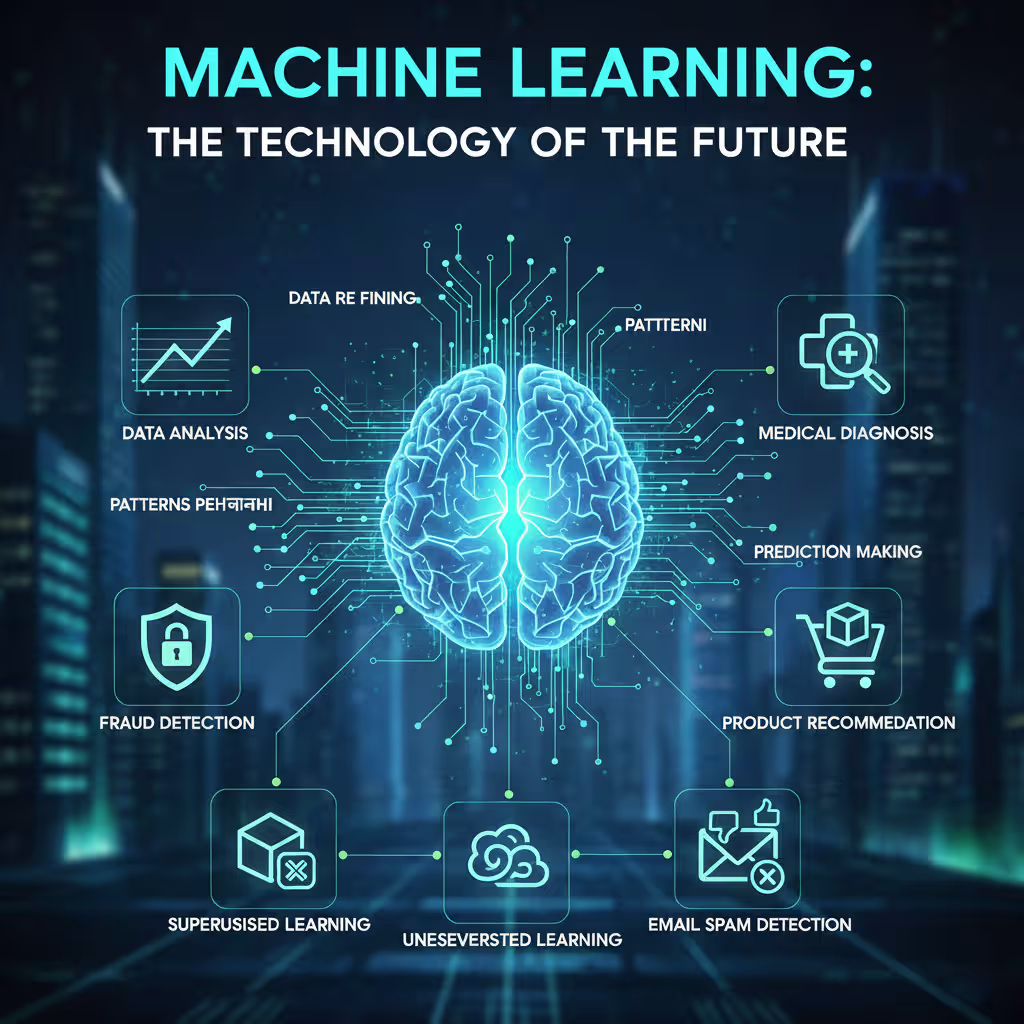Machine Learning: Unlocking the Future of AI and Data Innovation

In the rapidly evolving landscape of artificial intelligence, Machine Learning (ML) stands out as a foundational technology. It empowers systems to learn from data, identify patterns, and make decisions with minimal human intervention. Far from being a futuristic concept, Machine Learning is already deeply embedded in our daily lives, driving everything from personalized recommendations to advanced medical diagnostics. Understanding the principles and applications of Machine Learning is crucial for anyone looking to navigate or innovate within the digital age.
What is Machine Learning?
Machine Learning is a subset of artificial intelligence that provides systems with the ability to automatically learn and improve from experience without being explicitly programmed. Instead of writing code for every specific task, developers train algorithms using vast datasets. These algorithms then learn to recognize patterns, make predictions, or take actions based on the data they've processed. The more data a Machine Learning model is exposed to, the better it typically becomes at its designated task.
The Core Idea Behind ML
At its heart, Machine Learning involves building mathematical models to help computers learn from data. This learning process is iterative, meaning the model continuously refines its understanding and performance as it encounters more data. This capability makes Machine Learning incredibly powerful for tackling complex problems where traditional rule-based programming is impractical or impossible.
Types of Machine Learning
The field of Machine Learning is broadly categorized into three main types, each with distinct approaches to learning:
Supervised Learning
Supervised learning involves training models on a 'labeled' dataset, meaning each piece of input data is paired with its correct output. The algorithm learns to map inputs to outputs, and once trained, it can predict outcomes for new, unseen data. Common applications include:
- Spam detection: Classifying emails as 'spam' or 'not spam'.
- Image recognition: Identifying objects or faces in images.
- Predictive analytics: Forecasting stock prices or customer churn.
Unsupervised Learning
In contrast, unsupervised learning deals with 'unlabeled' data. The algorithm's goal is to find hidden patterns, structures, or relationships within the data on its own. It's often used for exploratory data analysis. Examples include:
- Clustering: Grouping similar customers for targeted marketing.
- Anomaly detection: Identifying unusual network activity for cybersecurity.
- Dimensionality reduction: Simplifying complex datasets while retaining key information.
Reinforcement Learning
Reinforcement learning is about training agents to make a sequence of decisions in an environment to maximize a cumulative reward. The agent learns through trial and error, receiving positive rewards for desired actions and penalties for undesirable ones. This type of Machine Learning is particularly effective for:
- Robotics: Teaching robots to perform tasks in dynamic environments.
- Game playing: Developing AI that can master complex games like Go or chess.
- Autonomous vehicles: Optimizing driving decisions in real-time.
Key Applications of Machine Learning
The practical applications of Machine Learning are vast and continually expanding, transforming nearly every sector:
- Healthcare: AI-powered diagnostics, personalized treatment plans, drug discovery, and predictive analytics for disease outbreaks. Machine Learning is revolutionizing patient care.
- Finance: Fraud detection, algorithmic trading, credit scoring, and personalized financial advice. Robust Machine Learning models enhance security and efficiency.
- E-commerce and Retail: Recommendation engines, demand forecasting, inventory management, and personalized shopping experiences.
- Autonomous Systems: Self-driving cars, drones, and industrial robots rely heavily on Machine Learning for perception, navigation, and decision-making.
- Natural Language Processing (NLP): Powering virtual assistants, translation services, and sentiment analysis tools.
Challenges and the Future of Machine Learning
Despite its immense potential, Machine Learning faces challenges such as data privacy concerns, algorithmic bias, and the need for explainable AI. Ensuring fairness, transparency, and ethical development are critical as Machine Learning technologies become more pervasive.
Looking ahead, the future of Machine Learning promises even more sophisticated applications, including advanced human-computer interaction, general artificial intelligence, and breakthroughs in scientific research. The continuous evolution of algorithms and computational power ensures that Machine Learning will remain at the forefront of technological innovation.
Conclusion
Machine Learning is not just a technological trend; it's a fundamental shift in how we approach problem-solving and create intelligent systems. By enabling machines to learn from data, it opens up unprecedented opportunities for innovation across every industry. As the field continues to mature, its impact will only deepen, making a solid understanding of Machine Learning essential for future success and progress.
